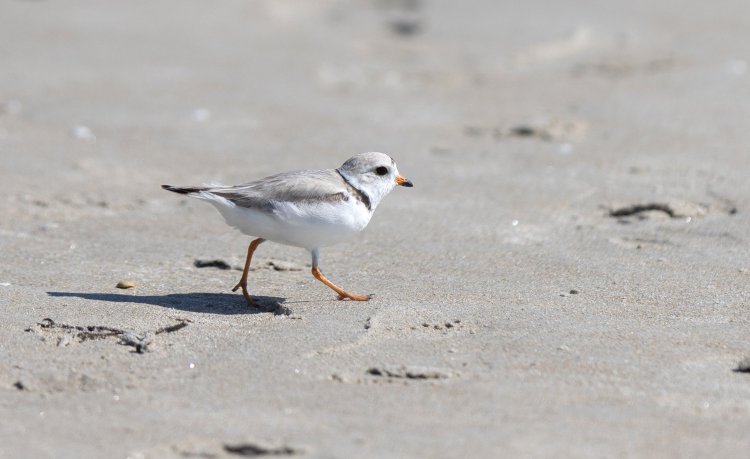
The population of endangered piping plovers in Maine has reached a record high this summer.
Laura Minich Zitske, director of Maine Audubon’s piping plover and least tern project, said the 174 pairs of nesting birds documented this year reflects the state’s sustained effort to protect the species.
“It takes a village to raise these guys,” she said.
Multiple organizations have been involved in the protection of plover habitats since they were listed as an endangered species in 1986, including the Department of Fisheries and Wildlife, the U.S. Fish and Wildlife service, countless municipalities, private landowners, and volunteers.
Jami Fitch, sustainability director for the town of Scarborough, agreed that the increase in this year’s population is the product of decades of conservation paying off. Plovers typically nest on large, sandy beaches, including those in Scarborough.
According to Zitske, Maine Audubon had anticipated that this summer would be good for plover populations because their productivity was high last summer. Productivity is measured by the number of chicks that are raised to be able to fly. Last year, there were 143 pairs of nesting birds counted.
“When I started my job here at Maine Audubon, there were only 33 nesting pairs,” she said. “Maine numbers have really gone up and we are doing really well for as little beachy shoreline beach as we have.”
The previous decline in plover populations reflected changes in beach habitats, shifting weather patterns and human disturbance. However, successful conservation rates are on the rise across New England in recent years. Zitske added that National Audubon Society partners in Massachusetts, New Hampshire, Rhode Island and Connecticut have also seen promising productivity this summer.
Plover nesting territories are marked and sectioned off from the public on most beaches to protect their habitat from beachgoers and predators. In Maine, field crews monitor plover frequencies each day from Ogunquit to Reid State Park in Georgetown. Management of protected land for plovers begins in April. This year, plovers were spotted on southern Maine beaches as early as March 11.
The four Scarborough beaches — including Higgins Beach, which saw the first plover of the season — have 35 pairs of nesting plovers, according to Fitch, or five more pairs than the town saw last year.
Despite the increase in plovers in New England, Zitske said the populations in Canada, the mid-Atlantic, and the south are not faring as well, making it even more important to continue conservation efforts in Maine and the Northeast.
We invite you to add your comments. We encourage a thoughtful exchange of ideas and information on this website. By joining the conversation, you are agreeing to our commenting policy and terms of use. More information is found on our FAQs. You can modify your screen name here.
Comments are managed by our staff during regular business hours Monday through Friday as well as limited hours on Saturday and Sunday. Comments held for moderation outside of those hours may take longer to approve.
Join the Conversation
Please sign into your CentralMaine.com account to participate in conversations below. If you do not have an account, you can register or subscribe. Questions? Please see our FAQs.